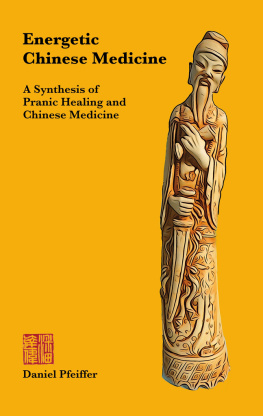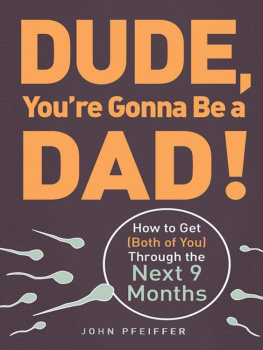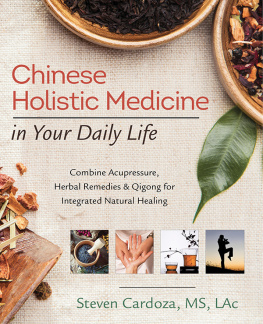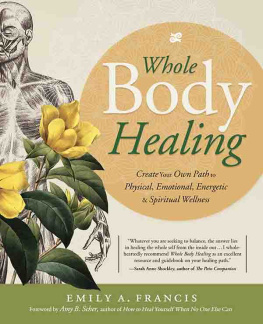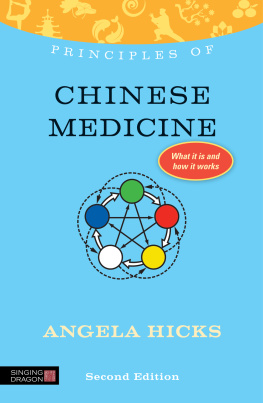Important Note:
Energetic Medicine is not supposed to replace traditional medicine, but to complement it. If your discomfort continues, as a patient please see a doctor or a medical practitioner about this. Pranic healers consider working together with physicians as sensible and worthwhile. Further remarks can be found at www.prana-heilung.de or www.globalpranichealing.com
2017 Daniel Pfeiffer
Illustration: Claus Krome, Cora Kocher, Daniel Pfeiffer
Layout: Claus Krome
Editing: Ursula Escher-Schmidt
Translation: Axel Proschko
Production and publishing: BoD Books on Demand GmbH, Norderstedt
ISBN: 978-3-7431-8671-2
Dont believe the scriptures, dont believe the teachers, dont even believe me.
Only believe what you have thoroughly examined and recognized as serving yourself and your well-being.
Buddha
Table of contents
What prompted me to write this book
Before I came to pranic healing I had engaged myself in Traditional Chinese Medicine (short form: TCM) for a long time. What had always fascinated me was its clear structure and the art of being able to understand a human being in its entirety very quickly and profoundly. Unlike the western approach of looking at a disease isolated from the personality and to a large extent from the environment of the patient, in TCM the patients personality is a crucial part of the diagnosis and therefore the therapy. Due to an old tradition, we can estimate several millennia, Healers were dependent on making a diagnosis without any measurements which are daily routine nowadays. This seemed to be a disadvantage, but proved to be an essential advantage of diagnostic investigation. This made room for the big picture and the single diagnostic findings were arranged in a system. This was the only way of becoming aware of the inner interdependence of the single fractions of a person and its surroundings.
Nevertheless the ways of modern western medicine are justified and also its specialization in individual organs is often of great benefit. However there are always cases where one approach to curing a disease is not enough and it seems advisable to take a step back and try finding a cause which eludes the measured data in the laboratory.
Discovering pranic healing according to Master Choa Kok Sui freed me from being dependent on needles by offering me an instrument for directly treating the life energies which are described in TCM. In doing this I was able to reach other levels of body and consciousness. In TCM you can rarely, if at all, treat the psyche by means of acupuncture. It is the psyche however which constitutes most of recurring disorders and seems to play a predominant role especially with chronic diseases. Classic acupuncture is in most cases totally unsuitable for affecting a patients psyche.
While attending pranic healing seminars I have discovered basic similarities and in further practising TCM I found more and more approaches which helped to make the procedure of pranic healing easier for me or explained it better. Correlations became more clearly and some successions in treatment were only comprehensible through my background knowledge of TCM.
Some years ago Master Sai Cholleti asked me to give a short presentation on pranic healing and TCM. It showed that the knowledge of TCM also helped others to gain a broader view of treatment. Basically every time we met other participants of the course asked me if I could illustrate certain disease patterns from a TCM point of view to advance treatment in cases where the usual approach did not work as expected. After the presentation Master Sai Cholleti asked me right away if I could imagine turning my combined approach into a book. Putting his suggestion into action took quite a while, but I hope to give other therapists an insight with this book and I would be glad if combining the two methods could help more people or if I could make access to energetic medicine easier through the already established and acknowledged TCM.
This book was written for all users of pranic healing according to Master Choa Kok Sui. In my explanations I presume a solid basic knowledge of pranic healing and I refer to the books by Master Choa Kok Sui as well as courses where the techniques of pranic healing are taught.
My special thanks applies to all people who supported me in the writing of this book. Most of all I want to mention my wife and son who didnt see much of me during the finishing of this book and who enrich my life in such a wonderful way. This book is dedicated to them.
My parents have to be thanked for supporting me in every aspect of my life.
Furthermore I want to thank all my teachers who have made me the person I am today. I thank especially Master Sai Cholleti for his knowledge, his support, trust and last but not least his friendship.
Ursula Escher-Schmidt was a big help. Without her the book would not have been finished so quickly and without her inquiries it would surely be less understandable. Many thanks to Cora Kocher for her drawings and Claus Krome for the wonderful graphic conversion. My special thanks goes to Axel Proschko, who made the English version of this book possible. Also my thanks goes to Elain and Milton Spitzer taking part in giving feedback as native speakers.
Order in Traditional Chinese Medicine
Before attempting to connect TCM with pranic healing we have to engage ourselves in the inner order and, most of all, the making of diagnoses in TCM.
Maybe you have heard about TCM before and if so, you might have come across the terms YIN and YANG. Those two constitute the skeletal structure and the beginning of the Chinese approach. Their basic meaning has nothing to do with medicine whatsoever, but simply describes two sides of a mountain. One side lies in the shadows, the other one is bathed in sunlight. Youll notice what this kind of medicine relies on from the first minute you engage yourself in it: the goal is to estimate if something is rather YIN, i.e. less animate, reclusive, passive or rather YANG and therefore more animate, expressive or active. Hence the therapist needs to constitute an imaginary average value first. This is not the same for everyone, but an individual value, the therapist wants to lead the patient to.
And something else becomes clear: depending on what I observe and in what circumstances, something can be either YIN or YANG. Sometimes it depends on qualities of a certain thing which establish it as YIN or YANG in a certain situation.
Lets take earth as an example: observed on its own you cannot attribute it to YIN or YANG. Only in correlation to other objects a classification is possible.
In correlation to the moon and the movement of the two celestial bodies earth is YIN, for the moon is circling earth, thus being the more animate. If we stay with movements and simply change the objects observed by looking at earth and sun, earth is moving, therefore YANG and the sun is passive or YIN. Having a look at the light we see that the sun as a radiating celestial body is YANG, and the moon is YIN for it is only passively reflecting light.
But lets turn towards human beings again. It is often said that the woman is YIN and the man is YANG. This might be true in some respects, e.g. in reproduction the woman is the receiving one and the man is giving. Men tend to have a more developed muscular mass which might suggest a more active attitude.
But of course there are women who represent more aspects of the YANG and men who tend to show more characteristics of the YIN, compared to their fellows. So there are both men and women who are very creative and work in rather active and technical jobs such as mechanic.
Next page
